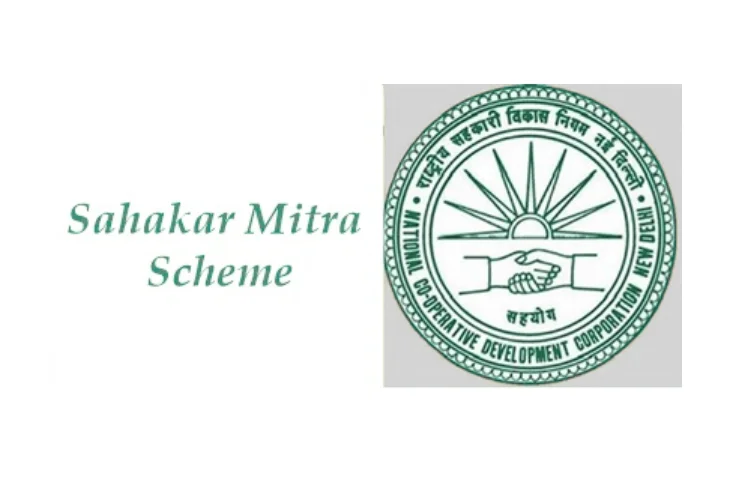The SAHAKAR MITRA Scheme on Internship Programme (SIP) is an initiative of the National Cooperative Development Corporation (NCDC). It was first introduced in 2012-13 with the aim of providing work-based learning experiences to professional graduates and young professionals.
What is the SAHAKAR MITRA Scheme?
The scheme offers a structured internship opportunity that connects youth with the cooperative sector. By engaging interns in real cooperative projects, NCDC ensures they understand the functioning of cooperatives, get leadership exposure, and contribute to the development of Farmer-Producer Organizations (FPOs) and other cooperatives.
Over the years, the scheme has expanded to cover various states and universities, including State Agricultural Universities. Today, it stands as a unique platform to prepare future leaders for the cooperative sector while simultaneously supporting needy cooperatives.
Why was the SAHAKAR MITRA Scheme Launched?
The cooperative sector in India is vital for rural development, agricultural growth, and farmers’ welfare. However, cooperatives often face challenges such as lack of business planning, inadequate professional skills, and weak leadership.
The SAHAKAR MITRA Scheme was launched to address these challenges by:
- Providing professional graduates with practical learning in cooperatives.
- Building a pipeline of young leaders who can take up roles in Farmer Producer Organizations (FPOs).
- Assisting needy cooperatives in preparing business plans and projects.
- Promoting entrepreneurial opportunities in start-up cooperatives.
This way, the scheme benefits both the graduates (by enhancing their career opportunities) and the cooperative sector (by bringing in fresh ideas and professional skills).
What are the Objectives of the SAHAKAR MITRA Scheme?
The scheme has five clear objectives:
- Deep Immersion in Cooperative Functioning
- Practical Learning and Context Understanding
- Engagement in Startup Cooperatives
- Leadership Roles in FPOs
- Assistance to Needy Cooperatives
What are the Benefits of the SAHAKAR MITRA Scheme?
The SAHAKAR MITRA Scheme provides both financial and professional benefits to interns:
| Benefit | Details |
| Monthly Stipend | ₹10,000 per month for four months (₹40,000 in total) |
| Report Preparation Support | ₹5,000 for data collection and analysis expenses |
| Total Financial Assistance | ₹45,000 (stipend + report support) |
| Career Growth | Work experience improves employability in cooperatives, agribusiness firms, and rural development sectors |
| Networking Opportunities | Interaction with NCDC officials, mentors, and cooperative leaders builds professional connections |
What is the Duration of the Internship?
The internship under this scheme goes on for up to four months. Interns are expected to finish their work and submit a detailed report within this period. The stipend for the last month is released once the final report is submitted, making sure the internship is completed properly.
Get ready to crack government job exams with leading educators
Who is Eligible for the SAHAKAR MITRA Scheme?
The eligibility criteria are well-defined to ensure that the scheme targets young professionals from relevant fields.
| Category | Eligible Courses |
| Professional Graduates | Agriculture, Dairy, Animal Husbandry, Veterinary Sciences, Fisheries, Horticulture, Textiles, Handloom, Information Technology (IT) |
| Postgraduate / Professional Courses | MBA in Agri Business, MBA in Cooperation, MBA in Finance, Forestry, International Trade, Rural Development, Project Management, MCA, M.Com, Inter ICAI, Inter ICWA |
Also Check: List of Government Schemes of India
What is the Selection Process of the Scheme?
The selection and placement of interns is done through a structured process:
- Shortlisting – Committees screen applications based on eligibility and recommendations from sponsoring institutions.
- Placement – Interns are placed at NCDC Head Office, LINAC (Lead and Integrated National Agricultural Cooperative), or Regional Offices.
- Mentorship – Each intern is assigned a mentor for guidance and supervision.
- Assignments – Interns may work on cooperative business plans, expansion projects, or FPO strengthening activities.
- Committee-based Selection – A formal committee ensures fairness, transparency, and alignment with NCDC objectives.
What Reports Must Interns Submit?
Interns are required to submit:
- A comprehensive fair-typed report in bound form.
- Business plan or project report of the cooperative they worked with.
- Details of activities, findings, challenges, and learnings.
Note:
- Reports become the property of NCDC.
- Interns cannot publish or use the reports for personal use.
Why is the SAHAKAR MITRA Scheme Important for Students and Cooperatives?
The SAHAKAR MITRA Scheme is Important for Students and Cooperatives because:
- For students, it provides a stipend, career exposure, and industry experience.
- For cooperatives, it provides assistance in planning, business expansion, and access to young professionals.
- For India, it strengthens rural development, FPOs, and the cooperative ecosystem.
Key Takeaway
| Aspect | Details |
| Scheme Name | SAHAKAR MITRA Scheme on Internship Programme |
| Launched By | National Cooperative Development Corporation (NCDC) |
| Year of Launch | 2012-13 |
| Stipend | ₹10,000/month for 4 months |
| Report Support | ₹5,000 |
| Total Support | ₹45,000 |
| Duration | Maximum 4 months |
| Eligibility | Professional graduates and postgraduates (Agri, MBA, MCA, M.Com, etc.) |
| Application Mode | Online via NCDC Sahakar Mitra portal |
| Outputs | Business plans, project reports, FPO leadership training |
Also Read:
Questions Based on the SAHAKAR MITRA Scheme
Q1. Which organization launched the SAHAKAR MITRA Scheme?
a) NABARD
b) RBI
c) NCDC
d) Ministry of Finance
e) SIDBI
Answer: c) NCDC
Q2. In which year was the SAHAKAR MITRA Scheme launched?
a) 2010-11
b) 2012-13
c) 2014-15
d) 2016-17
e) 2019-20
Answer: b) 2012-13
Q3. What is the total financial support provided to interns under the scheme?
a) ₹25,000
b) ₹30,000
c) ₹40,000
d) ₹45,000
e) ₹50,000
Answer: d) ₹45,000
Q4. What is the monthly stipend under the SAHAKAR MITRA Scheme?
a) ₹5,000
b) ₹7,500
c) ₹10,000
d) ₹15,000
e) ₹20,000
Answer: c) ₹10,000
Q5. Which of the following is NOT an objective of the scheme?
a) Deep immersion in cooperatives
b) Practical learning
c) Leadership roles in FPOs
d) Startup cooperative engagement
e) Direct subsidy to farmers
Answer: e) Direct subsidy to farmers
Q6. What is the maximum duration of the internship?
a) 2 months
b) 3 months
c) 4 months
d) 6 months
e) 1 year
Answer: c) 4 months
Q7. Which of the following postgraduate qualifications is eligible?
a) MBA Agri Business
b) MBA Finance
c) M.Com
d) MCA
e) All of the above
Answer: e) All of the above
Q8. Who provides mentorship during the internship?
a) Farmers
b) Government officers
c) Designated mentors assigned by NCDC
d) NGOs
e) Private companies
Answer: c) Designated mentors assigned by NCDC
Q9. What type of report must interns submit?
a) Handwritten report
b) Fair-typed bound report
c) Oral presentation
d) Online blog post
e) No report required
Answer: b) Fair-typed bound report
Q10. The reports submitted by interns become the property of:
a) Ministry of Agriculture
b) NABARD
c) NITI Aayog
d) NCDC
e) Indian Council of Agriculture Research (ICAR)
Answer: d) NCDC
- MISHTI Scheme, India’s Initiative to Restore Mangrove Ecosystems
- National Green Hydrogen Mission Features, Objectives, and Benefits
- Paramparagat Krishi Vikas Yojana, Transforming India’s Organic Farming
- Mission on Integrated Development of Horticulture NHM and HMNEH
- Swachh Bharat Mission, India’s Journey Towards Cleanliness and Hygiene
- SAGY, A Step Towards Holistic Development of Indian Villages

Priti Palit, is an accomplished edtech writer with 4+ years of experience in Regulatory Exams and other multiple government exams. With a passion for education and a keen eye for detail, she has contributed significantly to the field of online learning. Priti’s expertise and dedication continue to empower aspiring individuals in their pursuit of success in government examinations.
